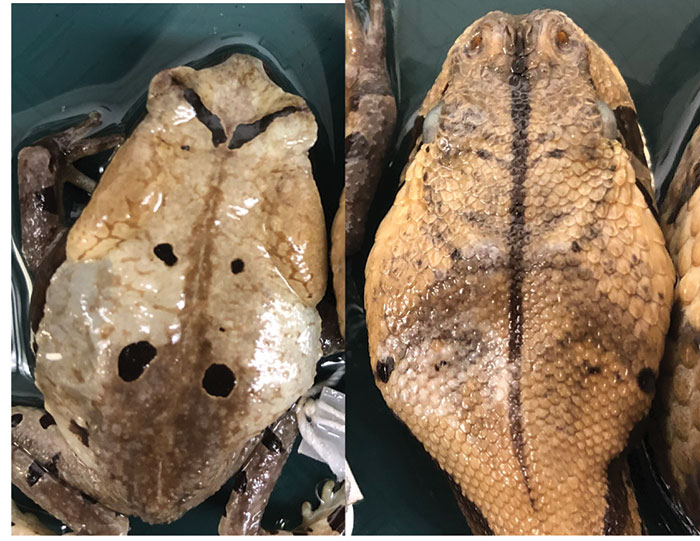UTEP Biology Professor Chronicles Toad's Ability to Mimic Lethal Viper
Last Updated on November 05, 2019 at 12:00 AM
Originally published November 05, 2019
By Darlene Barajas
UTEP Communications
Eli Greenbaum, Ph.D., an associate professor of biological sciences and director of The University of Texas at El Paso’s Biodiversity Collections, is the senior author of a study recently published in the Journal of Natural History that documents a newly discovered natural defense against predation by the Congolese giant toad.

Greenbaum led the study in collaboration with UTEP doctoral students Gene Vaughan and Mark Teshera, undergraduate Theresa Edmonston, and Congolese colleague Chifundera Kusamba, Ph.D.
Greenbaum’s investigation into how the toad mimics the appearance and behavior of the venomous Gaboon viper to avoid being eaten by predators has received worldwide attention. The grapefruit-sized amphibian is a master of disguise and has an astonishing resemblance to the head of the highly venomous Gaboon viper.
"We're convinced that this is an example of Batesian mimicry, where a harmless species avoids predators by pretending to be a dangerous or toxic one," Greenbaum said.
After years of fieldwork in the eastern provinces of the Democratic Republic of the Congo, Greenbaum and his colleagues discovered that the toad (Sclerophrys channingi) occurs only in areas where the viper (Bitis gabonica) is present. The toad also looks like the viper — its body has some of the characteristic colors and triangular shape of the snake’s head. Also, like the snake, the toad emits a hissing noise resembling the sound of air being released from a balloon.
“Because the toads are relatively large compared to the vast majority of other frogs in the region, they are likely to be very tempting prey to a suite of generalist predators that are known to eat frogs, including mammals, birds, large lizards and snakes,” Greenbaum said. “Predators likely avoid the toad because they fear its resemblance to the Gaboon viper, which has the longest fangs and highest venom yield of any snake in the world.”
The researchers reached their conclusions after scrutinizing natural history specimens in the UTEP collections, as well as animals in captivity and the wild. These comparisons showed that the color pattern and shape of the toad's body matched up well with those on the viper's head.
“This is the first example in the world of a toad pretending to be a snake to avoid predation, so the results are both unique and important,” Greenbaum said. “It makes me speculate about other amazing things we have yet to discover in the poorly explored forests of Democratic Republic of the Congo.”
“I think this project is a wonderful example of UTEP students engaging with faculty to make an exciting discovery,” said Robert Kirken, Ph.D., dean of UTEP’s College of Science. “The student in Dr. Greenbaum’s class, Theresa Edmonston, made the initial observation that the Congolese giant toad looked like the Gaboon snake. The inquisitive faculty member then delves into this research area and generates and tests this hypothesis, consults with other experts in the field and together they subsequently publish their work for the scientific world to review and consider new studies and models by which animals protect themselves from predators. All of this came about by a student making an observation in her genetics class. That’s science in its purest form.”